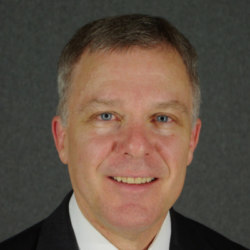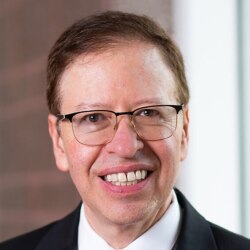California Seeks Federal Funding for the “Worst Transit Project in the US”
When Marc Molinaro takes up his position as the new federal transit administrator, he will have the opportunity to save taxpayers a quick $5.1 billion. All he has to do is decline to provide federal funding for what a high-profile transit advocate recently dubbed “the worst new transit project in the United States”: the extension of San Francisco’s BART system through downtown San Jose.
The BART extension managed by the Santa Clara Valley Transportation Authority (VTA) is now expected to cost over $12.7 billion and open for service in 2039. At $2 billion per mile, the project rivals New York City’s oft-criticized Second Avenue Subway in terms of cost, yet given San Jose’s relatively low population density, it cannot match the ridership potential offered by a subway extension in Manhattan’s Upper East Side. So, from a cost-benefit perspective, the BART extension is considerably worse.
There are many contributors to the project’s high costs, including, of course, VTA’s use of project labor agreements which drive up expenses “due to the restricted number of bidders, higher union wages, and the imposition of union work rules.” But the most perplexing is the agency’s decision to use an unusual single-bore tunneling method for the subway portion of the project. Instead of cutting up East Santa Clara Street, digging out a shallow tunnel and then covering it up, VTA has opted to use a bespoke, 54-foot-diameter tunnel-boring machine imported from Germany.
By using this machine, VTA hopes to reduce disruption to businesses at street level, but the tunneling technique will lengthen the project and oblige the agency to remove and relocate more soil and rock than it would using the “cut and cover” method. A lot more soil. A pair of 20-foot-diameter, five-mile-long tunnels would displace 614,000 cubic yards of earth. By contrast, a 54-foot-diameter, single-bore, five-mile-long tunnel would displace 2.23 million cubic yards of earth.
And, because the plan is to create only a single bore, a recent visualization provided by the VTA depicted the platforms expected to be 75 feet below ground. Commuters will face long escalator rides to reach the tunnel, reducing any travel-time benefit they might get from using BART versus any mode of surface transportation.
Under mounting pressure to reconsider the decision to construct a 54-foot-diameter single-bore tunnel, according to a VTA official, “Our staff has become open minded to re-looking at every aspect of the project.” VTA has now hired an independent engineering firm to do an evaluation, where they are reportedly reexamining the twin-bore option, a “hybrid” option where the single bore is retained in close proximity to the station, while the twin-bore option is used for most of the tunnel, and a much narrower single-bore option where the diameter could be reduced to as narrow as 34 feet.
While a 34-foot, single-bore design would reduce the amount of cubic yards to be removed to 887,000 cubic yards (raising the question of why a narrower single tunnel wasn’t an option in the original proposals), putting two tracks inside a single tunnel is not a common solution. Duplicating a tunnel for separate tracks allows for easier construction and maintenance, and is safer; it is also easier to switch tracks when trains are traveling in dedicated tunnels. Regardless of what design is ultimately chosen, the projected completion date for this massive project has now slipped to 2039.
Another perplexing VTA decision was to include on the project a two-mile segment connecting San Jose’s Diridon station with Santa Clara. This station pair is already served by the commuter rail Caltrain, which recently electrified at a cost of $2.4 billion and increased service levels.
The justification for including this redundant segment is the fact that VTA could build a railyard near Santa Clara Station but not at Diridon due to lack of space. But BART already has a railyard further up the to-be-extended line at Hayward. Trains terminating at Diridon and being taken out of service could have simply been driven up to Hayward with or without passengers. While this approach does use additional electricity, it is far more cost-effective than spending billions on duplicate infrastructure.
But the bigger question is whether BART needs to be extended at all. Will expected ridership on the BART extension come anywhere near the level needed to justify its high cost? A VTA ridership study based on 2012 data estimated weekday ridership at 54,600, but a subsequent analysis based on later data reduced the estimate to below 33,000. Although the Federal Transit Administration uses this new, lower number in its reporting, VTA has never updated its publicity materials to reflect the reduction.
And even this lower estimate may be exaggerated. The ridership estimate for VTA’s Phase I BART extension into Santa Clara County overestimated ridership on that segment by almost a full order of magnitude. As the local CBS affiliate reported, September 2023 ridership of 2,349 fell way below the 23,000 riders VTA had projected.
One of the prerequisites for a well-used mass-transit system is that it must serve a metropolitan area that is characterized as a “hub and spoke” model. In this urban configuration, there is one central downtown that workers living throughout broad peripheral suburbs commute into and out from every day. The borough of Manhattan in New York City, where 1.6 million people commute in and out from every workday, is a perfect example of this. At a smaller scale, San Francisco, where prior to the Covid pandemic nearly a half-million people commuted in from outside, is the reason that BART’s original routes, built in the 1970s, made sense. But the Santa Clara Valley, otherwise known as Silicon Valley, has a multi-nodal urban layout, with office parks and industrial parks scattered throughout the county. Downtown San Jose is just one node.
But even in ideal circumstances, an ongoing revolution in transportation technology may mean the time to build mass rail transit has come and gone. For example, by the time BART begins service in downtown San Jose, robotaxis and other transportation alternatives are likely to have become ubiquitous. Robotaxi industry leader Waymo already offers service in San Francisco and in communities neighboring San Jose. The company recently filed an application with the California Public Utilities Commission to extend service in and around the area of the BART extension. Support letters from San Jose Mayor Matt Mahan, Representative Sam Liccardo (D.), and others focused on the relative safety of Waymo and the need for additional transportation options with the Super Bowl and World Cup coming to the area in 2026. The flat streets downtown are also excellent for electric bikes and electric scooters, which have soared in popularity in recent years.
Given low ridership, the new extension will not be much of a solution to the “climate crisis” as advocates sometimes suggest. One of us previously estimated that the new BART extension would replace just 0.4 percent of passenger car trips in Santa Clara County even if the most recent ridership study proves to be correct. And by the 2039 projected service date, many if not most drivers will have switched to electric vehicles, which will share the same power sources as the BART trains. Finally, between now and 2039, construction activities on the new segment will actually increase greenhouse gas emissions. For those who still believe the world will end in 2030 if we don’t do something about carbon emissions, this project is clearly not the right thing to do.
The new FTA administrator would do the taxpayers and commuters who live and work in the Santa Clara Valley a big favor by canceling federal funding for the BART extension and instead challenging the VTA to consider alternatives. Silicon Valley remains a global center of innovation. Turning that creative energy toward the future of transportation, not constructing a megaproject that will be obsolete before it is even completed, should be the mission of VTA.
Edward Ring is the director of water and energy policy for the California Policy Center, which he co-founded in 2013 and served as its first president. He is also a senior fellow with the Center for American Greatness, and a regular contributor to the California Globe. His work has appeared in the Los Angeles Times, the Wall Street Journal, the Economist, National Review, City Journal, and other media outlets.
Marc Joffe is President of the Contra Costa Taxpayers Association and a visiting fellow at California Policy Center.
This article originally appeared in the National Review.

